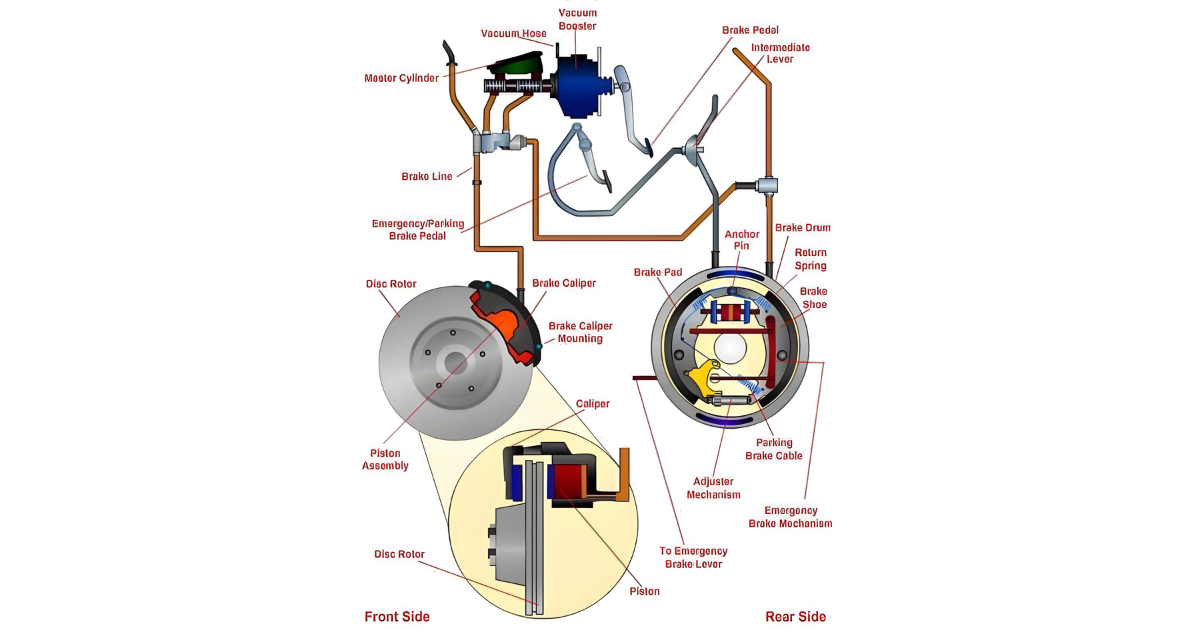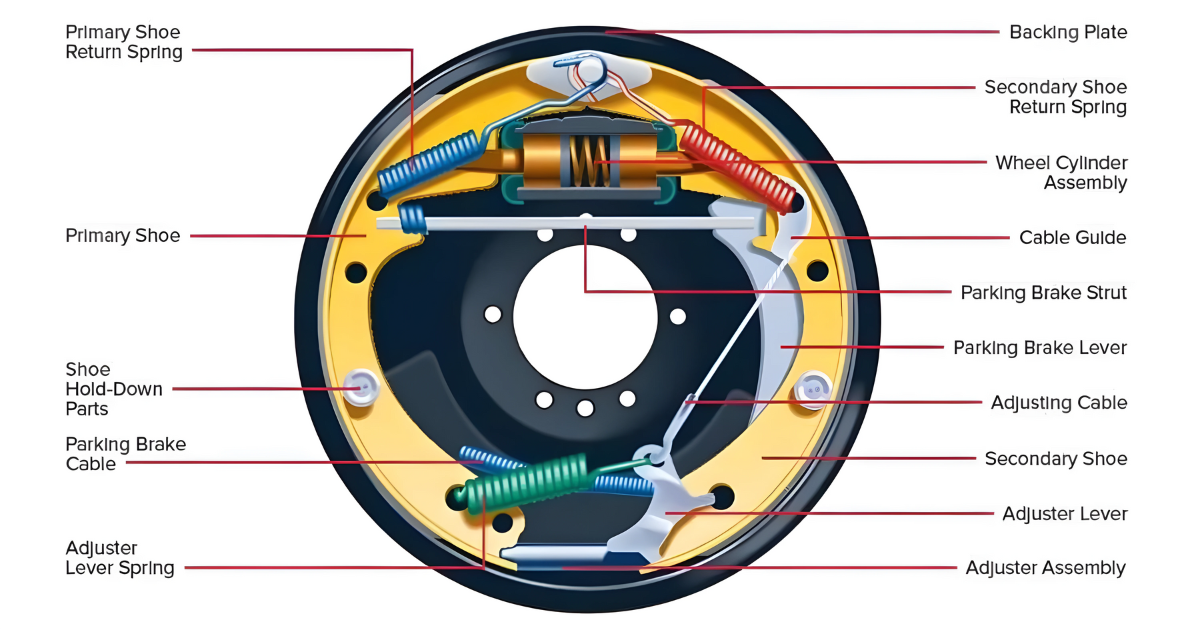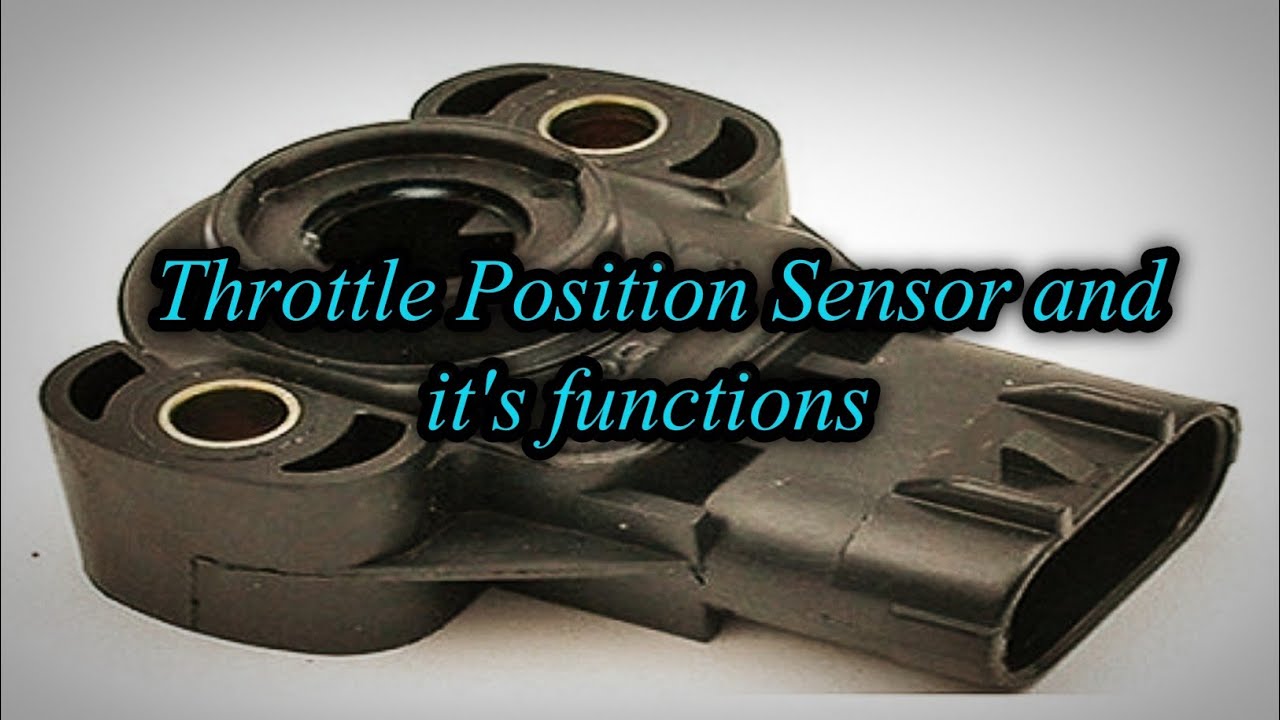When it comes to a car, the braking system is crucial for keeping everyone on the road safe. The system’s many moving components work together to bring the car to a stop by reducing the speed of the tires. Once you have a firm grasp of the components that make up the brake system, you’ll be better equipped to understand their individual roles and the significance of maintaining their optimal condition.
This article has shown the many components of your vehicle’s braking system. Various types of brake systems and their components are explained in the parts that follow.
Types of Brake Systems
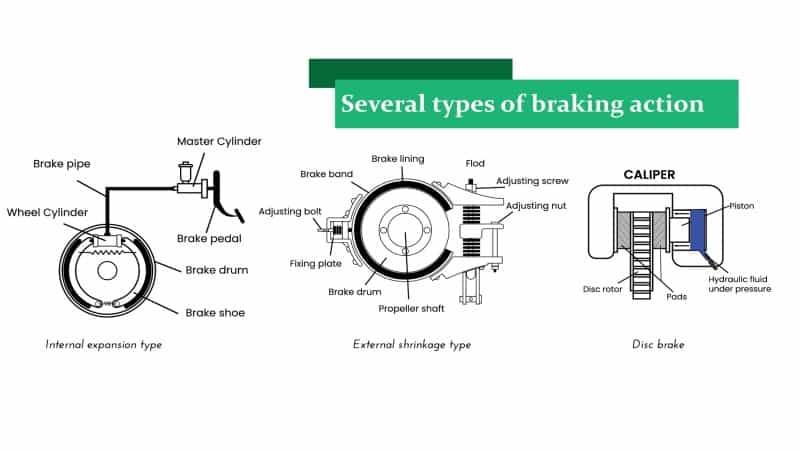
The automobile industry employs a wide variety of brake systems, each tailored to a certain vehicle type. The following types of brake systems are among the most frequent.
Mechanical brake system
With the use of various mechanical linkages—including fulcrums, cylindrical rods, springs, and so on—the mechanical braking system was engineered to transmit the force of the brake pedal to the brake rotors or drum, which in turn helped to slow down the tires and bring the car to a stop.
Hydraulic brake system
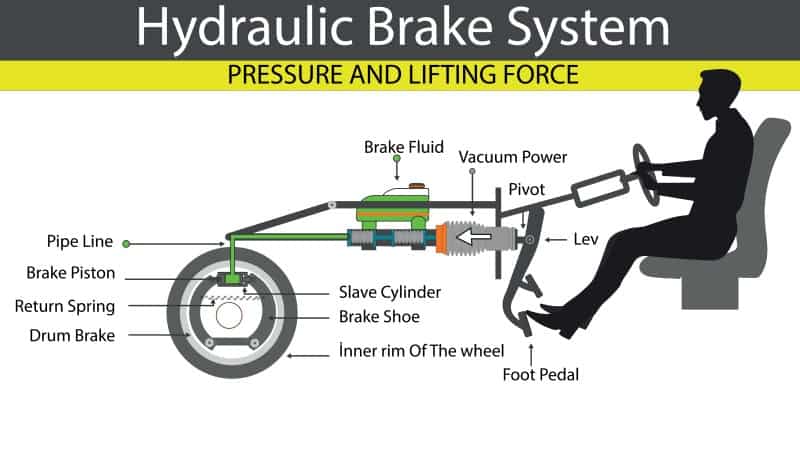
In a hydraulic braking system, the pedal force is converted into hydraulic pressure at the master cylinder, and then that pressure is transmitted to the brake rotor or drum at the end of the system via the brake lines.
Electrical brake system
Electric automobiles take advantage of the electrical braking system. The vehicle’s primary power source and brake application mechanism is the electrical motor.
Drum brake system
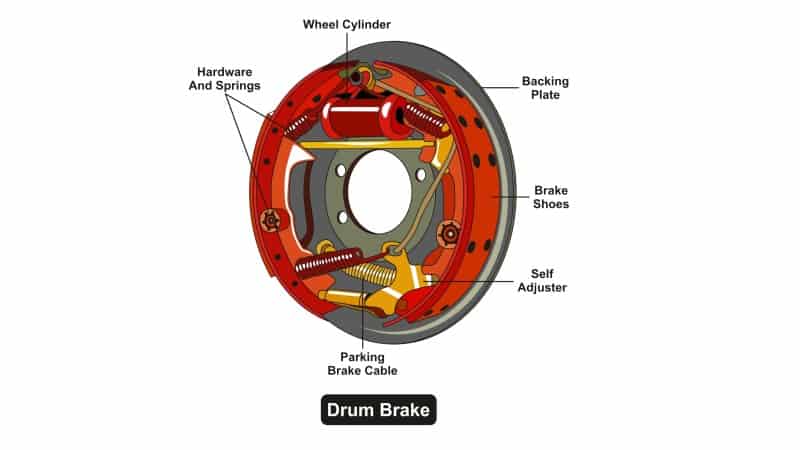
The three main components of a drum brake system are the brake drum, the brake shoes, and the cylinder wheel. With the application of pedal force, the system presses the brake shoes outward against the revolving drum component, generating friction that aids in bringing the wheels of the vehicle to a stop.
Disc brake system
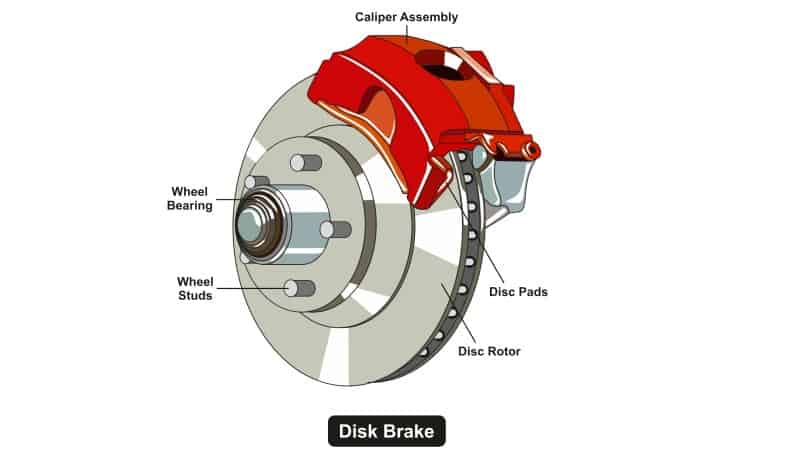
The components of a disc braking system are wheel-rotating brake rotors, frictional brake pads, and callipers that hold the pads in place.
Pressing down on the brake pedal applies force that activates the calipers, which in turn push the pads against the rotors (discs) to generate friction and bring the wheels to a stop.
Hand brake/emergency brake system work

The hand brake system is also known as an emergency brake. It is independent of the regular service brake. The brake system has a hand-operated lever that is connected through a metallic cable to the brake drum.
Electromagnetic brake system
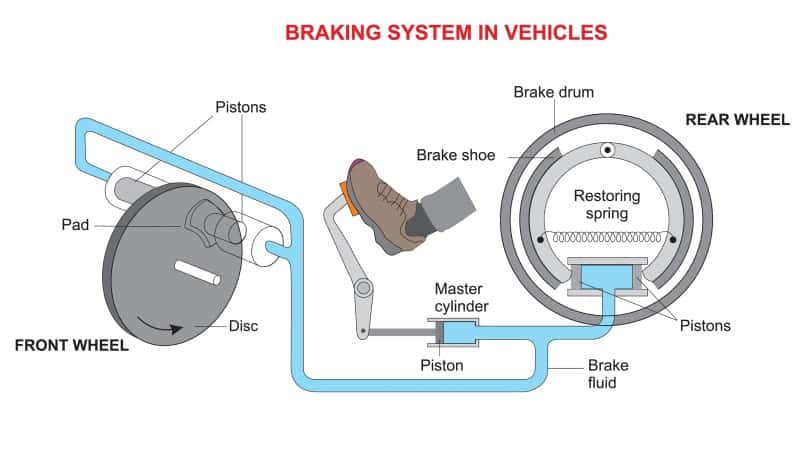
An electromagnetic brake system is a type of braking operation that involves applying brake force through electronic and magnetic power. It is designed to achieve frictionless braking, such that there will be no wear and tear on brake parts.
Brake System Parts / Components
Different parts are used to build different brake system layouts. There are automobiles that include disc brakes on every wheel, and then there are others that have disc brakes up front and drum brakes in the back.
Nevertheless, the majority of automobiles’ braking systems have the following components.
- Master cylinder
- Brake Rotor
- Brake drums
- Brake pedal
- ABS control module
- Wheel speed sensor
- Wheel cylinders
- Brake fluid container
- Brake hose pipes
- Brake pads
- Brake calipers
- Brake Booster
- Brake shoes
Conclusion
Every one of the brake system components discussed in this article is an essential feature of your vehicle’s braking system. They all play a crucial role in the safe operation and operation of your vehicle’s brakes, regardless of where they are located.
As a result, it is crucial to keep the parts in excellent working order at all times to prevent breakdowns that could cause accidents when driving.
If you want your brake system to work perfectly every time, regular maintenance is something you have to do. Furthermore, avoid unanticipated accidents by promptly repairing any defective brake element.


